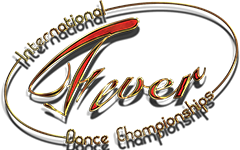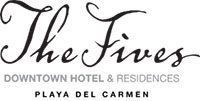Category and Discipline Listing
Updated October 2022
Categories
- Solo & Duet/Trio (One, two or three dancers in each respective category)
*Please note that duets and trios will compete against each other - Small Group (4-9 dancers)
- Large Group (10-15 dancers)
- Line (16 or more dancers)
- Extended Line (16 or more dancers with an extended time limit of 4- 7:30 min)
- Productions (16 or more dancers)
The same dancer(s) cannot compete more than once in the same age group and category in either solo, duet/ trio or group competition. This means dancers will never compete against themselves. Please move your entry up an age division should this situation arise.
Dancers may enter multiple solos into the competition. Should a dancer have more than one solo, each solo must compete in a different category. Only the dancer’s highest marking solo will be considered for overalls including Powerhouse Soloists.
Discipline Listing
Jazz- Routine must primarily contain jazz movement and technique. One acrobatic trick permitted.
Ballet- Routine must contain classical ballet movement and technique. No acrobatics permitted.
Pas De Deux/ Trois- Routine must consist primarily of adagio movements. This ballet form is typically performed by a male in soft shoe and ballerina(s) on pointe. No acrobatics permitted.
Demi Character Ballet- Routine must contain classical ballet movement and technique, and must portray a recognizable character and or tell a story. No acrobatics permitted.
Pointe- Routine must contain primarily classical pointe technique, using classical music and pointe shoes. No acrobatics permitted.
Contemporary Ballet- Routine must contain ballet technique, however style and music are not limited to a classical scope. No acrobatics permitted.
Contemporary Pointe- Routine must contain primarily pointe technique using pointe shoes, however the style and music are not limited to a classical scope. No acrobatics permitted.
Lyrical- Routine must contain classical technique with specific dancer attention given to song lyric. One acrobatic trick permitted.
Modern- Routine must primarily contain modern technique. One acrobatic trick permitted.
Tap- Routine must primarily contain tap technique. Pre-recorded tap sounds on performer’s music selection will not be permitted. One acrobatic trick permitted.
Acro- Routine must demonstrate an equal amount of dance and acrobatic skill. It should contain passes connected by dance elements and choreography as well as balance and control.
Song and Dance- Routine must contain an equal display of singing and dancing (in any of the above mentioned styles). Judges will mark both disciplines accordingly. No other lead vocals on the back track will be permitted. If a microphone is used, the microphone must be provided by the studio. The setup of the microphone MUST be pre-arranged with the theatre technical staff. Please note there may be a charge for this technical service. Fever I.D.C. discourages the use of microphones as it sometimes hinders the performance if not used correctly. The staff of J.Bobb Fever Inc. and/ or the theatre staff will not be held responsible should a performance be affected due to the use of a microphone or poor sound quality produced by a microphone.
Contemporary- A routine that fuses modern and classical ballet, drawing on newer philosophies of movement that depart from classical techniques, omitting structured form and movement. Acrobatic elements permitted.
Hip Hop- Routine must primarily contain street/ hip hop technique and style. No jazz technique permitted.
Production- A routine using 16 or more dancers to portray a theme, concept or story. Production categories have an extended time limit of 4- 10 minutes and will be primarily judged on concept, formations and choreography. All productions will compete in the competitive division and will perform in the same age group.
Open- Any routine displaying a combined effort of the above mentioned dance disciplines or other that does not fit the description of the fore mentioned. Note: A MAXIMUM of 5 acrobatic movements or tricks is permitted. Acrobatic movements performed in sequence are to be considered 1 of the 5 tricks allowed (ie) a tumbling pass. Any routine containing more than 5 tricks will be moved to the Acro category or be disqualified.
Musical Theatre- A routine consisting of any style of dance, which interprets a song from a Broadway show, movie musical, or song depicting characters. Lip syncing is permitted.
Specialty- Consists of all other categories such as gymnastics, ballroom, clogging, novelty, ethnic, etc.
Improv- All Dancers will be invited to the stage. One at a time, each dancer will listen to a piece of music selected by the competition or judges and will immediately perform an improvisational solo. Each dancer’s piece of music will be different and can be any style of music. Junior, and Teen categories are available. Dancers are free to perform any style of dance they prefer. Dancers will be scored accordingly based on musicality, creativity and movement. Improv dancers will be awarded in order of placement. **NEW** Participating improv dancers may be asked to incorporate a challenge during the category, this could include but not limited to a prop that is provided by FEVER and more! **NEW** Top improv dancers in the 2 age categories will be awarded a scholarship as an Overall. Improv soloists MUST be registered alongside studio routines. Entries will not be accepted onsite for the improv categories. Please include any dancers interested in the improv category in your entry estimation upon booking your location.
Breakdance- Routine must primarily contain breakdance technique and style.
- All solos, duets/trios and groups, will compete the above-mentioned disciplines in their specified age groups.
- In the case of 18 or more competitors within the same discipline and age, the group will be arbitrarily split and scored as two individual categories.
Acro Trick Rules
- Acrobatics or “tricks” are considered to be any movement in which a dancer completes a 360 degree rotation where the dancer has both feet above their head. Illusions, partnering lifts, front and back rolls in which a dancers feet end up over their head are permitted. Listed below are the discipline descriptions along with the acrobatics or “trick” limitations.
- ONE acrobatic trick is now permitted in Tap, Jazz, Lyrical and Modern. For example a tumbling pass whether it be one or multiple dancers at the same time is considered to be ONE trick. Cartwheels, Illusions, front and back rolls, shoulder rolls are allowed, as well as partner lifts that may end up with partner’s feet over their heads.



